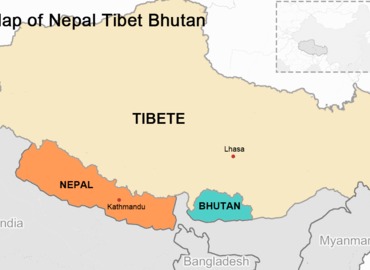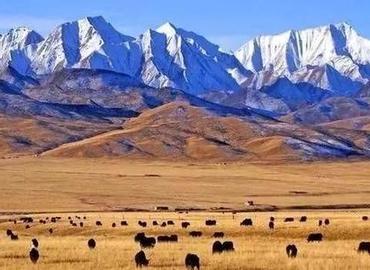Tibetan Antelope
- Catherine
- Last Updated : 10/28/2025
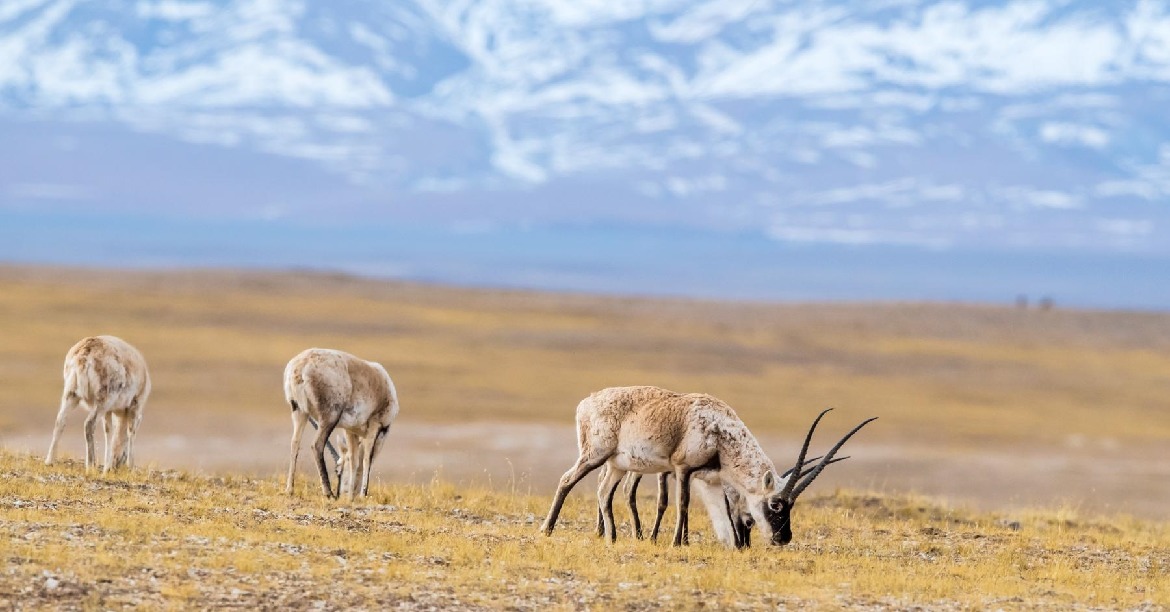
Tibetan antelope, also known as Chiru, is an animal regarded as elves on the Tibetan Plateau. Chiru Tibetan antelope is a unique and rare species in China, and one of the ancient and mysterious races. According to historical records, the number of Tibetan antelopes has reached one million, but due to the international market's demand for Shahtoosh shawls, which are made from the fine furs of Tibetan antelopes, they were poached in large numbers in the last 20 years of the 20th century. The spectacular sight of tens of thousands of Tibetan antelopes running wild on the vast plateau is long gone. In recent years, poaching has almost disappeared, but the number is still small because the habitat area is still gradually shrinking. Let us approach the world of the Tibetan antelope.
Facts about Tibetan Antelope
- English Name: Tibetan antelope, Chiru
- Chinese Alias: 藏羚、长角羊
- Classification: Even-toed ungulates, Bovidae Family, Pantholops Genus. It looks like a Mongolian gazelle, but much larger in the body.
- Shoulder Height: 80-85 cm (male), and 70-75 cm (female)
- Weight: 35-40 kg (male) 24-28 kg (female)
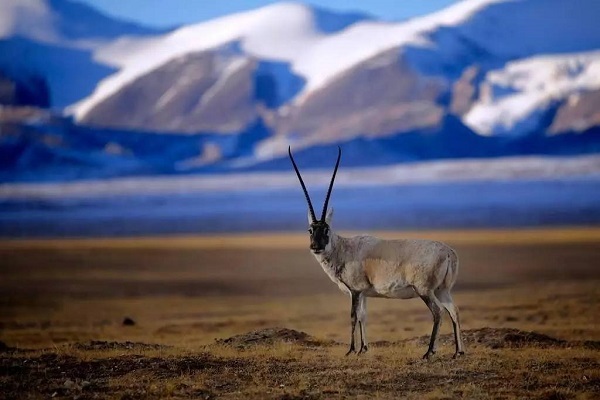
- Physiological characteristics: well-proportioned and strong limbs. The tail is short and pointed. The guard hairs are thick, dense and straight.
- Particularity: There is a small sac in each nostril to help breathe on the plateau within thin air.
- Fur Color: Male antelopes' head, neck and upper part are light tans, deep in summer and light in winter, white in the abdomen, and eye-catching black spots on the face and the four legs. The female is pure yellow-brown with a white abdomen.
- Horn: Adult males have straight horns, slightly inwardly curved at the tips, 50-60 cm. Females have no horns.
- Lifespan: generally no more than 8 years old
- Distribution: mainly habitats in China's Qinghai, Tibet, and Xinjiang provinces. On the Tibetan Plateau, centered on Qiangtang Prairie, south to the north of Lhasa, north to the Kunlun Mountains, east to the north of Tibet's Qamdo region and southwest of Qinghai, and west to the Sino-Indian border are all the distribution regions. Occasionally, a few are also found across the border in Ladakh, India.
Behavior and Migration
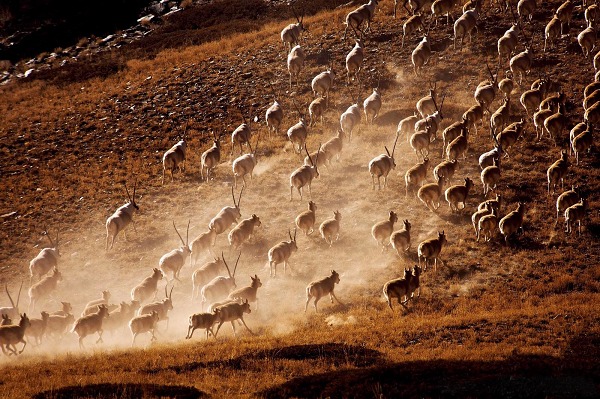
Tibetan antelopes inhabit sparsely populated and harsh alpine regions such as desert meadow plateaus and plateau grasslands at an altitude of 4,600-6,000 meters. So far, no zoo or other institution in the world has raised them. What are their behaviors and what is unique about the Chiru Tibetan antelope that can inhabit plateaus?
Tibetan antelopes are timid. In the morning and dusk, they are more likely to be found in small groups ranging from a dozen to thousands, foraging for food.
The number of red blood cells in their bodies is twice that of humans, which enables them to retain sufficient nutrients in their muscles even under conditions of extreme lack of oxygen at high altitudes of 4,600 to 6,000 meters. According to estimates, the Tibetan antelope can run at a maximum speed of 80 kilometers per hour. It is the fastest animal in the harsh environment of the plateau.
In addition, the biggest habit of the Tibetan antelope is migration. In summer, females migrate north along a fixed route to give birth. Male Tibetan antelopes and immaturities will stay in the wintering ground. After the mother antelopes give birth to their cubs in June and July, they return and rejoin the males in late autumn. They mate from November to December, with only one baby per litter. A few species will not migrate.
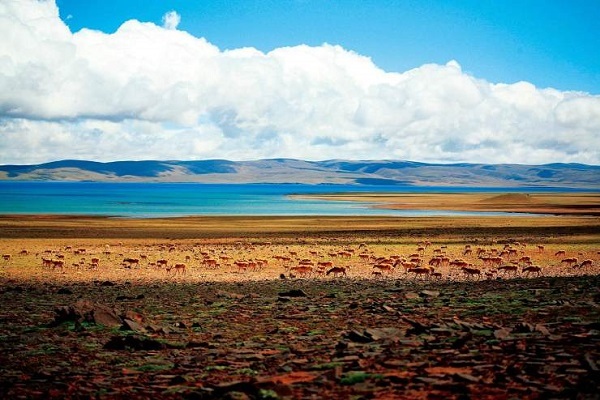
No matter what season it is, you have chances to encounter Tibetan antelopes on the roadside when traveling in Qinghai Sanjiangyuan Nature Reserve, Tibet Qiangtang Nature Reserve, or Xinjiang Altun Mountain National Nature Reserve. But the best season to witness the Tibetan antelope is closely related to the location. From the end of April and the beginning of May each year, female Tibetan antelopes begin to migrate to Zhuonai Lake in Hoh Xil, Qinghai, a world natural heritage site of the "Large Delivery House", to give birth to their offspring. So the best season to witness the Tibetan antelope in Hoh Xil must be summer. In July, 10 days after giving birth, the mother antelopes would migrate back to the original habitat with the newborn baby Tibetan antelope. So the best season to witness the Tibetan antelope in the Qiangtang Prairie is in autumn. And their migration is known as one of the most spectacular ungulate migrations in the world. Here are three major migration routes,
- Route 1: From Chumar River Bridge to Wudaoliang across the Qinghai-Tibet highway and railway to the southeast bank of Zhuonai Lake
- Route 2: From Qiangtang Prairie to Zhuonai Lake
- Route 3: From the Altun Mountain areas, passing by Jinyu Lake to the west bank of Zhuonai Lake
Poaching Vs. Protection of Endangered Tibetan Antelope
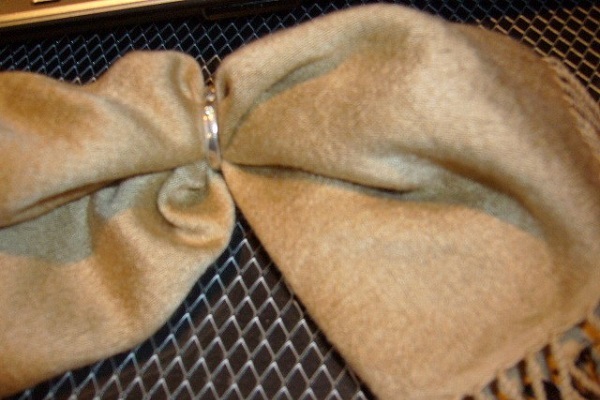
Chiru antelope is full of treasures, and its slender and soft wools are called "soft gold". The shawl made of chiru wool is called "Shahtoosh", which derives from Persian and means "king of wool", with an implication of the wool used by the king. Therefore, it was also translated as "The Emperor's Shawl". For centuries, Indians and Pakistanis have regarded "Shahtoosh" as a luxury decoration and collectible. Then, "Shahtoosh" spread to Europe and the United States, and is favored by the upper class in Europe and America. Gradually, the Shahtoosh shawl takes a place in the European and American markets as a fashion, and people are proud of having a Shahtoosh. Finally, it has become a symbol of wealth and status.
Why is the Poaching of Chiru Antelopes Banned?
The shahtoosh shawl price reaches a maximum of US$40,000 per piece, which is more expensive than the gold of the same weight. Due to the hugely profitable trade in Tibetan antelope wool and its textiles, illegal poaching of the Tibetan Antelope was very popular.
In historical records, the number of Tibetan antelopes has reached as many as one million, but due to the international market’s demand for chiru wool, they encountered a large number of poachers in the last 20 years of the 20th century, and the number dropped sharply. By 1995, there were more than 50,000 in Tibet. The Tibetan antelope is also called the "Chinese Water Tower". The Sanjiangyuan Nature Reserve of the Qinghai-Tibet Plateau is the main habitat of Tibetan antelopes. It can be said that the ecology of this area will deteriorate drastically without the Tibetan antelope, and many Tibet wildlife will also face extinction.
For this reason, since 1979, Tibetan antelopes have been under the legal protection of the Convention on International Trade in Endangered Species of Wild Fauna and Flora (CITES). In 2008, the Tibetan antelope chiru was listed in the International Union for Conservation of Nature (IUCN). It is illegal to kill, injure or trade this animal all over the world.
Chiru Antelope Protection in China
The Chinese government never stops its crackdown on poaching to protect endangered antelopes. In recent years, the poaching of Tibetan antelopes has decreased significantly.
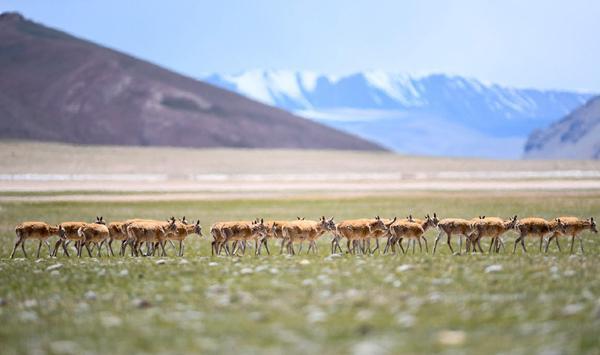
Over the years, in order to protect the chiru Tibetan antelope and other rare Tibetan animals, China established the Altun Mountain National Nature Reserve in 1983, the Qiang Tang Nature Reserve in 1992, the National Hoh Xil Nature Reserve at the end of 1997, and the Sanjiangyuan Nature Reserve in 2000. However, the Tibetan antelope and its living environment are still facing serious ecological threats as the gradual expansion of the grazing area in the reserve has reduced the scope of activities of wild animals such as Tibetan antelopes.
Whatever the situation is, it is getting better. By 2014, the number was nearly 300,000. In September 2016, IUCN lowered the Tibetan antelope from "endangered" to "near endangered" level. As of early 2021, the wild population of Tibetan antelopes has recovered from 70,000 in 1999 to more than 300,000.
Notes for Visiting
Nowadays, there are still not many areas where you can see Tibetan antelopes on the Tibetan Plateau. Apart from traveling along the Qinghai-Tibet Highway during large-scale activities of Tibetan antelopes, you can witness Tibetan antelopes in the vicinity of Hoh Xil. For passengers on the Tibet train, you can also see the running Tibetan antelopes when the train passes through the Hoh Xil Nature Reserve. In addition, you may also see wild cattle, wild donkeys, white-lipped deer, and brown bears. In the Qiangtang Nature Reserve, in the warm season, if you go deeper, you may also get a glimpse of Tibetan antelopes.
- Be careful not to disturb their lives and avoid causing panic when taking a picture.
-
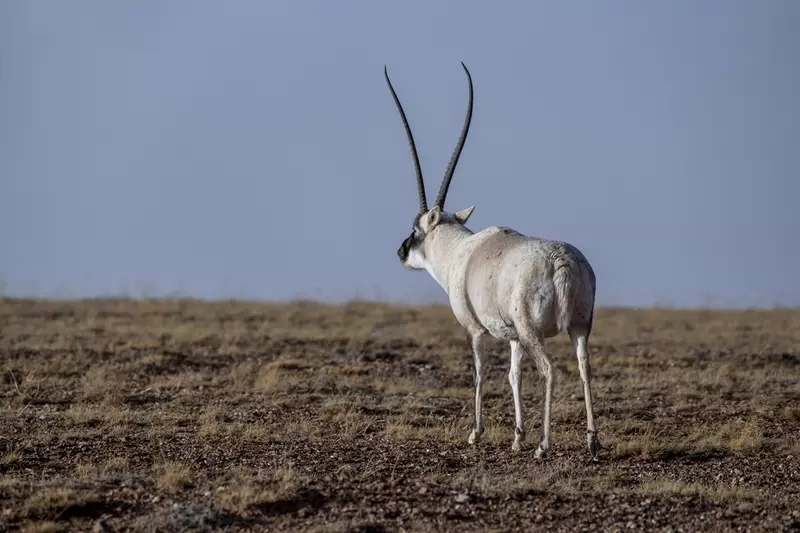
Don't buy the horns of Tibetan antelopes, the skulls of wild yaks, or the furs of any Tibetan wild animals in Tibet. This may cause you trouble when you pass through customs. If you do buy a shahtoosh shawl, the situation will be worse. For people trying to bring banned items into the country, this could mean high fines and even jail time. Many countries, including the United States, are strictly implementing this ban. Don't touch it when you encounter wild Tibetan antelopes in case the female Tibetan antelope gets panicked to abandon the calves.
- Don't deliberately chase them.
- It is best to bring a few more camera batteries and put the battery in a close-fitting shirt pocket to keep it warm. In winter, the temperature in Tibet will be below ten degrees, which can easily reduce the battery life. So the battery needs to be properly warmed to prevent freezing damage.
- A camera that can be easily operated with gloves is better because gloves are usually required during the visit.
- Carry a lightweight lens, the lighter, the better. A telephoto will be used when shooting Tibetan antelopes.
Email response within 0.5~24 hours.




